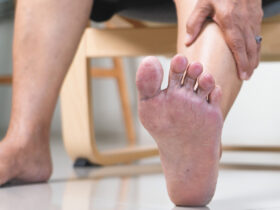By John C. Kagan, M.D –
 Because joint pain is different for everybody, so are the treatment options. Before moving forward with joint replacement surgery, you and your orthopedic surgeon should discuss your pain, overall health and ability to function. Your orthopedic surgeon will review your medical history, perform a thorough evaluation and conduct necessary tests such as X-rays or scans.
Because joint pain is different for everybody, so are the treatment options. Before moving forward with joint replacement surgery, you and your orthopedic surgeon should discuss your pain, overall health and ability to function. Your orthopedic surgeon will review your medical history, perform a thorough evaluation and conduct necessary tests such as X-rays or scans.
“Early diagnosis of joint pain is important and delaying treatment may only increase pain and reduce quality of life,” says John C. Kagan, a board certified orthopedic surgeon in Fort Myers and Cape Coral for more than 30 years. “I take the approach of listening to my patients, performing a complete evaluation and sharing my recommendations. I consult with my patient, and together we decide the best course of treatment for joint pain.”
In general, medications such as analgesics, narcotics and steroid injections may be the first course of treatment, depending on your condition. In addition, water therapy, exercise and physical therapy may be recommended.
When non-surgical options fail to relieve pain and symptoms, surgery may be recommended. More than 260,000 hip replacement surgeries are performed in the U.S. each year to help relieve pain and restore mobility.
In 2006, more than 780,000 total joint replacement procedures were performed by orthopedic surgeons in the U.S. (Source: National Center for Health Statistics; Centers for Disease Control and Prevention; 2006 National Hospital Discharge Survey.) The most frequent reason for performing a total joint replacement is to relieve the pain and disability caused by severe arthritis.
“Patients with severe osteoarthritis often try medications for pain relief, as well as physical therapy or alternative treatment,” says Kagan. “When non-surgical treatments fail, joint replacement can provide relief from pain and the chance to return to active living. New minimally invasive options have improved length of hospital stay and recovery times significantly – a huge benefit for patients.”
Most total joint replacements involve hip and knee joints; however, total joint replacement also can be performed on joints in the ankle, shoulder, fingers and elbow.
Individuals with a total joint replacement still can lead active lifestyles. Exercise not only is important in the recovery process, but also in the years following the surgery. A proper exercise program can help restore mobility and strength in the joint.
- Avoid activities that place repeated stress on the replacement such as running, jogging or skiing
- Engage in activities that do not place excessive stress on the replacement like swimming, bicycling, golf and doubles tennis
- Seek medical advice before beginning any physical activity because some restrictions may be recommended
For more orthopedic tips and information, visit Dr. Kagan’s blog at www.kaganbonehealth.com or his website at www.kaganortho.com. To schedule a consultation, call 239-936-6778.









